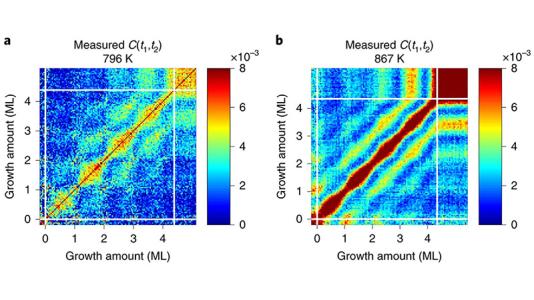
Scientific Achievement
Using X-ray Photon Correlation Spectroscopy (XPCS), we observe correlations between arrangements of monolayer-height islands on succeeding layers during vapor phase epitaxy of GaN.
Significance and Impact
These first XPCS measurements of 2D island dynamics during layer-by-layer growth demonstrate the ability to observe fluctuation dynamics of weakly scattering surface features in operating and synthesis environments.
Research Details
- High-energy XPCS using high-intensity “pink beam” was developed to enable in situ observation of atomic-scale surface dynamics.
- Two-time correlations revealed persistence in arrangement of islands formed on each monolayer during crystal growth.
- Kinetic Monte-Carlo modeling predicted conditions for persistence and identified atomic-scale mechanisms responsible.
Argonne National Laboratory seeks solutions to pressing national problems in science and technology. The nation’s first national laboratory, Argonne conducts leading-edge basic and applied scientific research in virtually every scientific discipline. Argonne researchers work closely with researchers from hundreds of companies, universities, and federal, state and municipal agencies to help them solve their specific problems, advance America’s scientific leadership and prepare the nation for a better future. With employees from more than 60 nations, Argonne is managed by UChicago Argonne, LLC for the U.S. Department of Energy’s Office of Science.
The U.S. Department of Energy’s Office of Science is the single largest supporter of basic research in the physical sciences in the United States and is working to address some of the most pressing challenges of our time. For more information, visit https://energy.gov/science.